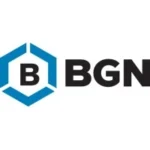SoftBank Group reported its first annual profit in four years, earning ¥1.15 trillion ($7.7 billion) for the fiscal year ending March 2025, as the Japanese conglomerate intensifies its focus on artificial intelligence infrastructure and investments.
The technology investment giant, which had struggled with years of losses, saw its net asset value decline 7.5% year-over-year to ¥25.7 trillion ($172 billion), primarily due to a drop in Arm’s share price. However, the company’s finances have been bolstered by strong gains from T-Mobile and solid performance in its core SoftBank segment.
Chairman and CEO Masayoshi Son has positioned the firm as a leading player in what he calls the “AI Revolution,” making significant commitments to infrastructure projects like Stargate, which plans to invest $500 billion over four years to build AI data centers in the United States. The company has also deepened its relationship with OpenAI through a $40 billion investment agreement announced in March, of which SoftBank expects to syndicate $10 billion to co-investors.
“Through technology we will build a more connected, empowered, and joyful world,” Son stated in the earnings presentation, highlighting the company’s strategic shift toward artificial intelligence.
SoftBank’s Vision Funds recorded a gain of $1.2 billion in the March quarter, with Vision Fund 1 gaining $1.8 billion primarily from increased valuation of ByteDance, while Vision Fund 2 posted a $0.7 billion loss due to weaker performance of public holdings.
The company maintains strong financial discipline with a loan-to-value ratio of 18% as of March, below its 25% guideline, even as it pursues ambitious AI investments including the $6.5 billion acquisition of chip designer Ampere Computing announced in March.
SoftBank also revealed that its popular payment app PayPay, which has over 60 million registered users in Japan, has begun preparing for an initial public offering. The company highlighted PayPay as “a great example of what the SoftBank ecosystem can achieve” through collaboration across its various holdings.






